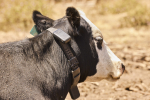“One of the best methods to determine if a herd is consuming adequate nutrients is herbage testing to pinpoint any limiting factors in the diet in combination with analysis from other supplementary feeds,” says animal nutrition manager Jackie Aveling.
Total nutrition including energy, protein, macro and micronutrients during calving and early lactation is critical to cow health, and milk production this year and next, she stresses.
Analysis of samples from thousands of Altum clients over the past five years shows pasture potassium is higher over winter and spring, then trends down over summer.
Meanwhile magnesium and calcium — both key lactating cows — trend lower in winter and spring, as do most trace elements in spring as pasture growth increases, thought there are exceptions.
“In a forage based diet, pasture potassium levels exceed the needs of calving and lactating cows,” notes Aveling.
“Potassium can negatively impact the availability of magnesium in the cow which increases the risk of milk fever.
“Identifying pasture potassium and magnesium levels will help plan an effective supplementation programme.”
But sodium can increase magnesium uptake in cows and provides other health benefits, she notes.
“For optimal health and maximum production balance is the key.”
A robust supplementation programme should include a combination of approaches, including high quality magnesium made directly available to the herd through water, dry cow molasses lick blocks and pasture dusting.
“Detailed analysis of the herbage test taken at the correct time will assist in identifying a direct supplementation programme, which then can be implemented to remedy the shortfalls and give the herd a better chance of reaching its optimum production potential.”
Aveling says this can also be linked to fertiliser programmes to introduce background doses of important elements such as magnesium and selenium.









